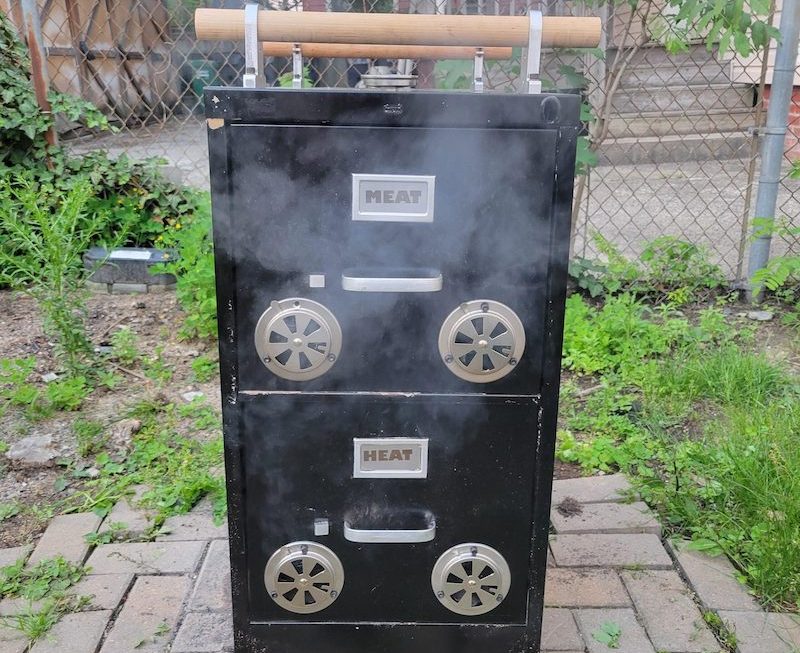Introduction
Key cabinets are an essential organizational tool for any business or establishment that requires the safe storage and easy access of keys. Whether you run a hotel, a car rental service, an office building, or a maintenance facility, the key cabinet provides a secure and efficient way to store and manage keys. In this comprehensive guide, we will explore the various types of key cabinets, their key features, the benefits of using them, and how to choose the right key cabinet for your specific needs.
Part 1: Types of Key Cabinets
Level 1: Wall-Mounted Key Cabinets
- Wall-mounted key cabinets are designed to be installed directly onto walls, providing a space-saving solution for key storage.
- They usually come in different sizes and are equipped with hooks or key tags for easy organization and identification of keys.
Level 2: Freestanding Key Cabinets
- Freestanding key cabinets are ideal for larger key collections and are often used in car dealerships, rental agencies, and property management companies.
- They are available in various configurations, ranging from small countertop models to larger floor-standing units with multiple drawers and electronic locking systems.
Part 2: Key Cabinet Features
Level 1: Security Features
- Key cabinet is built with security in mind and can include features such as heavy-duty steel construction, tamper-resistant locks, and reinforced doors.
- Some advanced models also offer electronic access control, biometric fingerprint scanners, and audit trail capabilities for tracking key usage.
Level 2: Organization Features
- Key cabinets are designed to keep keys organized and easily accessible, with options for adjustable hook racks, color-coded key tags, and label holders.
- Some models also include key management software or integration with existing access control systems for seamless key tracking and management.
Part 3: Benefits of Using Key Cabinets
Level 1: Enhanced Security
- By storing keys in a secure cabinet, you can prevent unauthorized access and reduce the risk of theft or loss.
- Key cabinet also provides a centralized location for storing and tracking keys, making it easier to monitor and control access to sensitive areas or valuable assets.
Level 2: Improved Efficiency
- Key cabinets enable quick and easy key retrieval, eliminating the need to search through drawers or key racks for the right key.
- With proper organization and labeling, key cabinets can streamline key management processes and reduce the time spent on key handling and tracking.
Part 4: Choosing the Right Key Cabinet
Level 1: Assessing Your Needs
- Consider the size of your key collection, the level of security required, and the available space for installing a key cabinet.
- Determine whether you need a wall-mounted or freestanding model, as well as any specific features or customization options that suit your operational needs.
Level 2: Evaluating Key Cabinet Options
- Research different key cabinets’ brands and models, comparing their specifications, security features, and user reviews.
- Look for key cabinets that offer durable construction, secure locking mechanisms, and additional features that align with your organization’s key management requirements.
Part 5: Maintenance and Best Practices
Level 1: Regular Maintenance
- Perform routine inspections of the key cabinet, checking for any signs of wear, damage, or malfunctioning locks.
- Keep the cabinet clean and free of debris, and make sure that keys are returned to their designated hooks or slots after each use.
Level 2: Employee Training
- Train your staff on proper key handling procedures, emphasizing the importance of returning keys to the cabinet after use and following any security protocols in place.
- Implement a key management policy that outlines the responsibilities of employees and the consequences for unauthorized key access or misuse.
Part 6: Choosing the Right Key Cabinet for Your Needs
When it comes to selecting the right key cabinet for your needs, there are several important factors to consider. First and foremost, you’ll need to determine how many keys you need to store and the level of security required. For a small number of keys, a compact key cabinet with a basic locking mechanism may suffice. However, if you’re looking to store a larger number of keys or require enhanced security, you may want to opt for a larger, more secure key cabinets with features such as a digital keypad or biometric access control.
Another important consideration is the type of mounting required for your key cabinets. Additionally, if you require a portable solution, there are key cabinets available with handles and carrying cases for easy transport.
Furthermore, consider the durability and construction of key cabinets. Look for a sturdy, well-built cabinet made from materials such as steel, to ensure the security and longevity of your keys. Additionally, consider features such as a scratch-resistant finish or weatherproof design if key cabinets will be placed in a high-traffic or outdoor area.
In addition, don’t forget to think about any additional features or accessories that may be beneficial to your specific needs, such as key tags, labels, or key rings. These can help you stay organized and easily identify keys at a glance.
Selecting the right key cabinet is crucial to maintaining the security and organization of your keys. By taking into account the factors mentioned above, you can make an informed decision and choose a key cabinet that meets your specific requirements.
Part 7: Key Cabinet Maintenance and Care
Once you’ve selected and installed your key cabinet, it’s important to implement a regular maintenance and care routine to ensure its longevity and optimal functionality. Proper maintenance can help prevent malfunctions, damage, or unauthorized access to your keys.
One of the most important aspects of maintaining a key cabinet is keeping it clean and free of debris. Regularly dusting and wiping down the exterior and interior of the cabinet can prevent the build-up of dirt, which can potentially interfere with the locking mechanism or key storage.
It’s also important to periodically inspect the locking mechanism and hinges to ensure they are functioning smoothly. Lubricating the lock and hinges with a suitable lubricant can help prevent rusting and ensure smooth operation. Additionally, check for any signs of wear and tear, such as loose screws or dents, and address any issues promptly to prevent further damage.
In addition to physical maintenance, it’s essential to periodically review and update the contents of the key cabinet. Remove any keys that are no longer in use or have been replaced, and update key tags or labels to maintain accurate organization.
Furthermore, it’s crucial to regularly review and update access controls and permissions for the key cabinet. Change any codes or passwords as needed, and ensure that only authorized individuals have access to the keys stored within the cabinet.
By implementing a regular maintenance and care routine for your key cabinet, you can ensure its longevity and optimal performance, ultimately enhancing the security and organization of your keys.
Part 8: Key Cabinet Security Best Practices
When it comes to storing keys securely, there are several best practices that can help prevent unauthorized access and ensure the safety of your keys. Implementing these practices can help protect valuable assets, maintain organizational efficiency, and enhance overall security.
First and foremost, it’s crucial to restrict access to key cabinets to authorized individuals only. Implement strong access controls, such as unique codes, passwords, or biometric authentication, to prevent unauthorized entry. Additionally, regularly review and update access permissions as needed to ensure that only those who require access can obtain it.
Furthermore, consider the physical security of the key cabinet. Additionally, consider the use of a key cabinet with enhanced security features, such as a digital keypad, tamper-evident seals, or reinforced construction, to further protect the contents of the cabinet.
In addition, maintain strict key control and tracking procedures. Keep a detailed record of who has accessed the key cabinet and when, and conduct regular audits to ensure that all keys are present and accounted for. Implementing a robust key control policy can help prevent the misuse or loss of keys, ultimately enhancing overall security.
Furthermore, consider the use of key tags, labels, or color-coded systems to aid in the organization and identification of keys within the cabinet. This can help facilitate efficient key management and reduce the risk of misplaced or misused keys.
By implementing these key cabinet security best practices, you can help enhance the security and organization of your keys, ultimately contributing to a safer and more efficient environment.
Conclusion
The key cabinet plays a crucial role in maintaining security, organization, and efficiency in any business or facility that relies on key management. By understanding the different types of key cabinets, their key features, and the best practices for using them, you can make an informed decision when selecting a key cabinet for your organization. Invest in a high-quality key cabinet that meets your specific needs and enjoy the peace of mind that comes with secure and organized key management.






